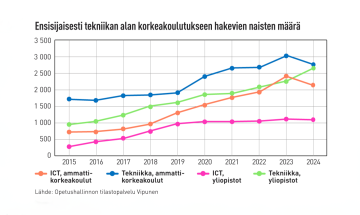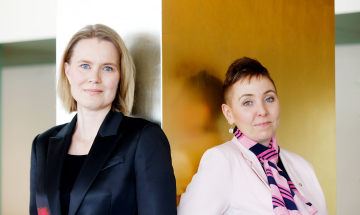
Technological understanding and creative problem solving – Assistant Professor Kaiju Kangas tells us why technology education is important for the wellbeing of the entire planet
‘Technology education’ is mentioned a lot in the national curriculum for basic education in Finland, but what does it actually mean?
“Technology education is a multidisciplinary form of learning by doing that involves creative problem solving. It seeks to provide learners with an understanding of the technological world and how to influence it,” says Kaiju Kangas, Assistant Professor at the University of Helsinki’s Department of Education.
In schools, technology education is linked to many different subjects from science to handicrafts. In practice, teaching is usually carried out through multidisciplinary projects in which learners solve problems and do hands-on work. Technological tinkering is an essential aspect of technology education.
“Tinkering improves creative problem solving. It starts from the children’s own ideas, and they learn through personal experimentation rather than from models. This leads to the creation of brand-new solutions. Many researchers say that creativity and innovativeness are the much-needed skills of the 21st century,” says Kangas.
Although Kangas thinks that technology education is beneficial for everyone, she also considers it important for technology education to start as early as possible.
“Children of kindergarten age are already used to using technology. Our daily lives are saturated with technology, so it’s good to understand what technology is and how it affects both us and our living environment. Young children usually display a natural interest in, for example, moving machines. This interest should be nurtured,” says Kangas.
Understanding the diversity of the technology sector
It is in the interests of business and commerce to consider how to get children and young people interested in the technology sector. Companies will need an increasing number of technology experts in the future.
“Technology education does not, of course, aim to raise children solely to meet the needs of business or industry. However, technological expertise is important for global wellbeing, as it can help us find solutions to the major problems of our time,” says Kangas.
Technology education helps children and young people to understand how their own skills and interests are connected to technology.
Technology education helps children and young people to understand how their own skills and interests are connected to technology.
“Technology is not just about engineering – it touches everything. For example, if you’re interested in nature conservation, you could end up in the technology sector creating solutions to environmental challenges. I can see how technology companies will need this kind of more broad-based competence,” says Kangas.
Not all children will become technology experts, but all of them will use technology. So it’s important to understand that technological solutions are designed by people, and can therefore be influenced by people. The choices a consumer makes will steer what kind of technology is developed.
This works! brings technology education to all first graders
At the start of the autumn term, Technology Industries of Finland announced its new technology education project for first graders: This works! The materials for this learning programme are available to teachers free of charge.
Kaiju Kangas is the project’s scientific mentor, and has given comments on the materials.
“Teachers will not necessarily have any training in technology education, which is why this easily approachable package is particularly useful, as it provides an easy introduction to technology education. The learning materials have been designed to enable children to be creative and come up with their own ideas,” says Kangas.
Kangas thinks that Finland is well equipped to become a top country in technology education – simply due to the fact that it has highly trained teachers and handicraft classes. However, there are very few teaching materials available for young children.
“Technology and a multidisciplinary approach are already strongly integrated into the new national curriculum. I can see how this learning programme would be a welcome aid for teachers in implementing this content,” says Kangas.
Text: Sini Kaukonen
Photo: Tuomo Aalto, University of Helsinki



